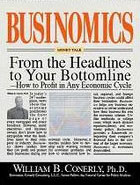Wood products demand is far more sensitive to the economy than demand for almost any other product. The outlook for the next two years is moderately positive, at least compared to the weak domestic markets we’ve seen since the downturn began. Log export markets look favorable, but with substantial risk deriving from Europe’s financial crisis. The bottom line is that timber industry executives must plan for moderate growth while protecting themselves from a possible recession.

This outlook focuses on macro-economic forces impacting timber, but not the micro-economic forces. We’ll ignore some important issues, such as competition with Brazil for export markets and Canadian timber policy. These are important, but better covered by other experts. The key issues we’ll address here include:
- Domestic wood products demand, housing starts
- Domestic wood products demand, remodeling
- Domestic wood products demand, non-residential construction
- Domestic wood products demand, industrial
- Export wood products demand
Housing starts will improve in 2012, but a small gain from a starting point of diddly squat leaves you only marginally above diddly squat. The problem with housing is simply too many houses. Upside-down mortgages, short-sales and foreclosures are merely symptoms of a problem: we built too many housing units in the boom, and then the growth rate of demand dropped off due to the recession. Right now the vacancy rate for both single-family homes and apartments is above long-run norms. Apartments are improving, however, as people who cannot make payments on their homes are moving into rentals. Construction of multi-family housing is improving, though from a very low base. Unfortunately for wood products demand, an apartment unit still uses less wood and panel than a single-family home. We’ll eventually see a strong resurgence in total housing starts, because current construction levels are well below our long-run needs. That won’t happen, however, until we work off this excess supply, and that won’t be in 2012. Things should look markedly better by the end of 2013, though.
Remodeling never turned down as much as new construction, but don’t believe it’s not cyclical itself. The Remodeling Market Index compiled by the National Association of Home Builders showed declines in activity every quarter from the end of 2005 through the present. Volume will pick up slowly, along with moderate economic growth, in 2012 and 2013. Don’t expect big gains, though.
Non-residential construction will certainly improve someday, just not in 2012. We are underbuilding compared to our long-term need, but the recession clobbered demand for space. Over the next two years vacancy rates for all property types will gradually improve, but the bulk of the improvement in construction will occur after our two-year time horizon. The good news: it shouldn’t get any worse.
Industrial demand for wood, such as for crates and pallets, typically correlates with manufacturing production. That has been trending upward at a moderate pace and should continue to improve through 2012 and 2013.
Export markets have been the brightest spot in the demand for logs, thanks to strong growth in China, Japan and South Korea. We have recently completed an economic forecast summary of those three countries, published on Forbes.com (China economic forecast, Japan economic forecast, South Korea economic forecast). Here’s the quick summary: all of these countries have positive economic forecasts, but all are at risk from a European recession. In addition, all three countries have appreciating currencies, with will make their exports harder to sell. (That’s a positive to United States companies trying to sell into those markets, of course.) Both China and South Korea have been fighting inflation. That poses a risk of going overboard and triggering a recession. China has seen home prices slip—some say plummet—but that is most likely a brief interruption rather than a long-term concern. Japan’s economic forecast is dominated by rebuilding from the earthquake and tsunami. The reconstruction is a positive for the nation’s purchases of wood products, but limited electricity and supply chain interruptions could stymie industrial activity, slowing demand for wood products.
The rest of the world will grow moderately—assuming that Europe does not collapse in a financial crisis. That’s a big assumption. Right now I estimate the odds at 75-25 that Europe muddles through. Companies should make plans on the basis of moderate growth in timber markets, but also be prepared for another recession. How to do that? Check out my article about recessions and business planning.
- Bulenox: Get 45% to 91% OFF ... Use Discount Code: UNO
- Risk Our Money Not Yours | Get 50% to 90% OFF ... Use Discount Code: MMBVBKSM
Disclaimer: This page contains affiliate links. If you choose to make a purchase after clicking a link, we may receive a commission at no additional cost to you. Thank you for your support!



Leave a Reply